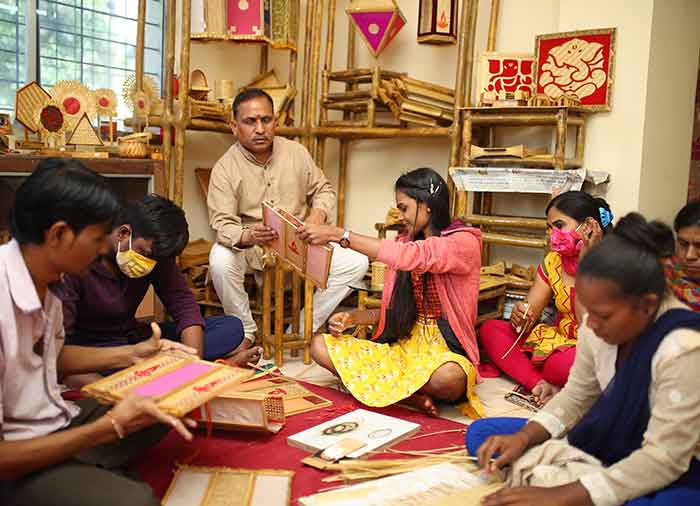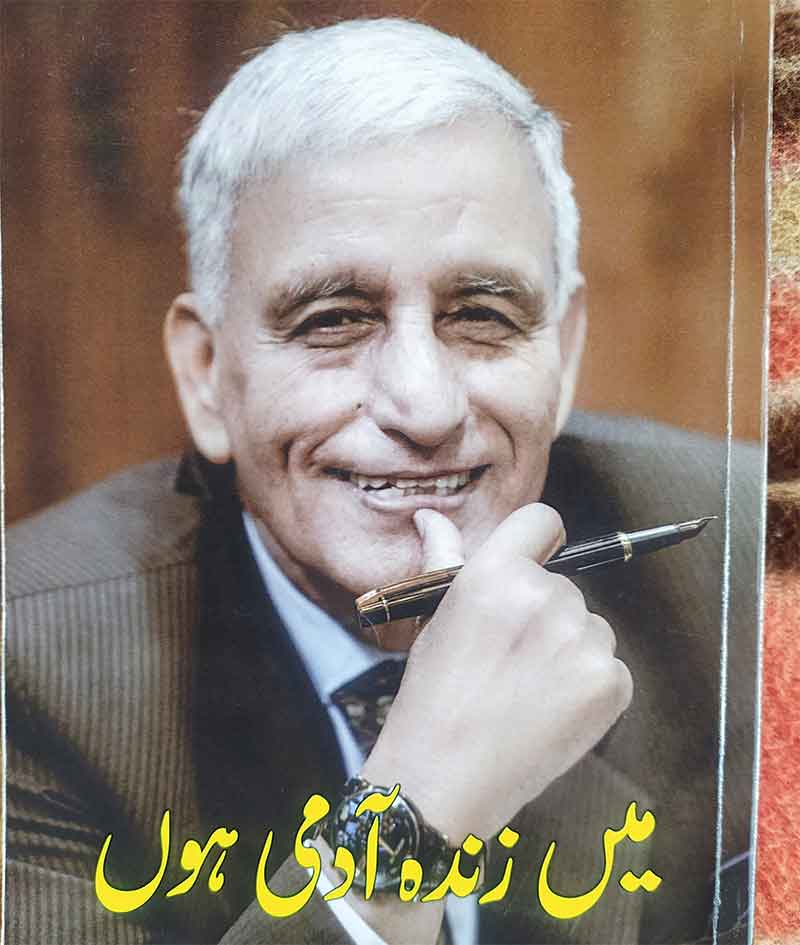
When love and skill work together, expect a masterpiece
— John Ruskin
We’ve all heard of endangered species and forests —now imagine crafts are at risk of going extinct. A rising number of indigenous crafts are now in danger of becoming endangered on account of their time-consuming nature and fewer craftspeople possessing these specialized skills. Times are changing and not all young people want to take over their parents’ old jobs, nor is it easy to attract new people to enter these trades.
Sunil Deshpande is a bamboo craftsman who is mentoring a movement for popularising bamboo craft. He has also been travelling extensively to study Indian crafts through a dialogue with the craftsmen themselves. His present obsession is chronicling these traditional crafts and the social environment which has nurtured them. His wife Nirupama Deshpande is an academically-trained social worker from a well-known school of social sciences and shares a common social chemistry with him. They have chosen for their home a village called Lavada in the Melghat forests in Amravati district of northern Maharashtra. I met Sunil recently at his small makeshift studio in Nagpur where he has enrolled young women from neighbourng slums as trainees in bamboo craft.
The preservation of crafts matters for many people as the traditional occupation is their sole livelihood. It gives them respect and dignity as well. Much of India’s heritage would be lost if people lost their traditional skills. “We have to understand the local challenges to improve their composite livelihoods,” avers Sunil. According to him, it takes local entrepreneurs, empowered to adapt easily to the nuances of local culture, to create and drive change sustainably on the ground. The challenge is to keep the cultural, social and economic balance intact. It is a very tenuous link. These crafts embody not just a socioeconomic narrative, but a political narrative as well.
Cultural mobility was restricted to only the educated upper castes that had the option to move laterally. The under castes did not have these options. This kept them rooted in their traditional identity and helped protect the pipeline of skills learned in the family milieu. These communities kept to their craft skills, partly because of forced immobility and membership of their guild remained their only identity.
Deshpande embarked on his yearlong project, “Search for talented craftsmen: a journey of communication and collaboration” as 150th birth anniversary tribute to the greatest craftsmen of all time, Mahatma Gandhi. The yet to be published monograph documents the diverse skills that weave into India’s vibrant craft landscape. Dehspande has covered almost every craft, some of these are so little known that craft connoisseurs also may not have heard of them. Although the research crystallised during the year, it has long been in the making. Deshpande has undertaken regular padyatras to understand the culture and society of these craftsmen. He is advocating for more voice for craftsmen in policy formulation and probably a small space for them in the decennial census exercise so that we have proper data on craftsmen to work upon.
Deshpande takes us through a journey into deep blocks, villages and settlements that provide sustenance to these craftsmen who pursue crafts as diverse as clay pottery, terracotta work, metal mirror work, block printing, grass-mat weaving, black stone pottery, metalwork , wax metal casing ,scroll painting and sheet metal work . What links them together is the ceaseless urge to keep their traditions alive even in the face of heavy odds. Moreover, all these crafts are eco-friendly, using traditional raw materials. The techniques are also grounded in principles that harmonise with nature. Deshpande has studied the socioeconomic and cultural life of families of these craftsmen and has found close link between them.
It is tragic that what was once an abiding symbol of India’s glorious cultural legacy has left many of its tradition bearers in a state of penury. It is time for the government, businesses and entrepreneurs to infuse new economic oxygen before these traditions become extinct. Ironically, the most authentic connoisseurs of Indian arts and crafts are foreigners who are genuinely interested in patronizing them so that they withstand the onslaught of the changing state of affairs.
For every artisan, 5-6 family members depend on the craft business for daily sustenance. Over the past few decades, the number of Indian artisans has decreased substantially due to declining skills, loss of access to existing markets, and difficulty catering to new markets, resulting in migration of artisans to cities for more stable employment.
The crafts are threatened with extinction primarily by mechanisation which offers a cheaper and faster way to produce the same goods. As a result, many artisan clusters are languishing. Historically, the handmade sector was characterized by local demand, inter-dependence of communities, the use of local raw materials and patronage .Patronage is fast shrinking with consumers preferring the cheaper machine-made varieties. We live in an era of mass-produced goods where economies of scale have led to lower prices. New materials have been developed that are not just cheaper, but also more durable. Competition from the power looms further hastened the end to the already precarious livelihood. This is a bitter reality that we have to contend with.
It is difficult to distinguish genuine handmade products from those made on power looms or the ones mass-produced by machines. Attempts at certification of genuine craft products have not taken off as consumer demand for certified produce has not grown and producers have limited incentives to adopt it.
While the origin of handicrafts is rooted in history, we have to link their future with the dual realities of culture and economy as they are not just the interpreters of India’s art but are also valuable earners of foreign exchange. They evoke the myths, legends and history of the people.
The artisan is not only a repository of a knowledge system that was sustainable but is also an active participant in its re-creation. To celebrate a craftsman’s perception of design, one must view some of our indigenous craft traditions which have evolved through an instinctive knowledge of the functional needs of a community. While the artisan continues with his craft, marketing remains a paramount problem. Though several crafts have been saved from near extinction, the grouping of artisan communities into modern-day guilds or co-operative societies has helped only in a limited way — it has just turned despair into a sense of hope.
One of the earliest acts of the new government in India after the country attained freedom was to set up a national Board for the identification of and development of crafts. Realizing the predicament faced by the weavers in the post-independence period, the All India Handicrafts Board stepped in to provide a buffer to the weavers. In 1965, the Board instituted national awards to craftsmen. They were a public recognition of talent, skill, and above all, the creativity of these flag bearers of a hoary tradition.
A plan for the promotion of a craft can yield concrete results only if it is a sincere exercise in which the craftsmen remain the key focus. However, more often than not, such efforts are generally short term. They provide only a cosmetic treatment and are a mere band-aid, the critical issues air brushed. Indian crafts have suffered primarily because of a lack of a visionary approach from the cultural administrators.
The Buddhist point of view takes the function of work to be at least threefold: to give a man a chance to utilise and develop his faculties; to enable him to overcome his ego centredness by joining with other people in a common task; and to bring forth the goods and services needed for a becoming existence. The basic argument is that work should not become stultifying and drudgery that it evokes little interest in the worker. It will be harmful both for the individual as well as the business. At the same time work should not become such leisure that it loses seriousness and doesn’t provide a challenge to the creative faculties of the worker.
“The craftsman himself,” says Ananda Coomaraswamy, a man equally competent to talk about the modern west as the ancient east, “can always, if allowed to, draw the delicate distinction between the machine and the tool. The carpet loom is a tool, a contrivance for holding warp threads at a stretch for the pile to be woven round them by the craftsmen’s fingers; but the power loom is a machine and its significance as a destroyer of culture lies in the fact that it does the essentially human part of the work”.
The modern man, who should be a craftsman, but who, in most cases, is compelled by force of circumstances to be a mill operative, has no freedom. He must make what his machine is geared to make. A craftsman creates a work of art. While most people approach their work with the mindset that they just want to get it done, craftsmen are more concerned with who they are becoming and what they are creating rather than how fast they finish it.
The genius of a craftsman can be best described by him alone. A women craftsman was once asked from whom she learnt her craft. She replied “from time as the most ancient, the parampara. We are the holders of sight and skill. We carry it in our wombs” she said. That tells us why these crafts are heirlooms handed down through generations.
Moin Qazi is a banker
SIGN UP FOR COUNTERCURRENTS DAILY NEWSLETTER
















































